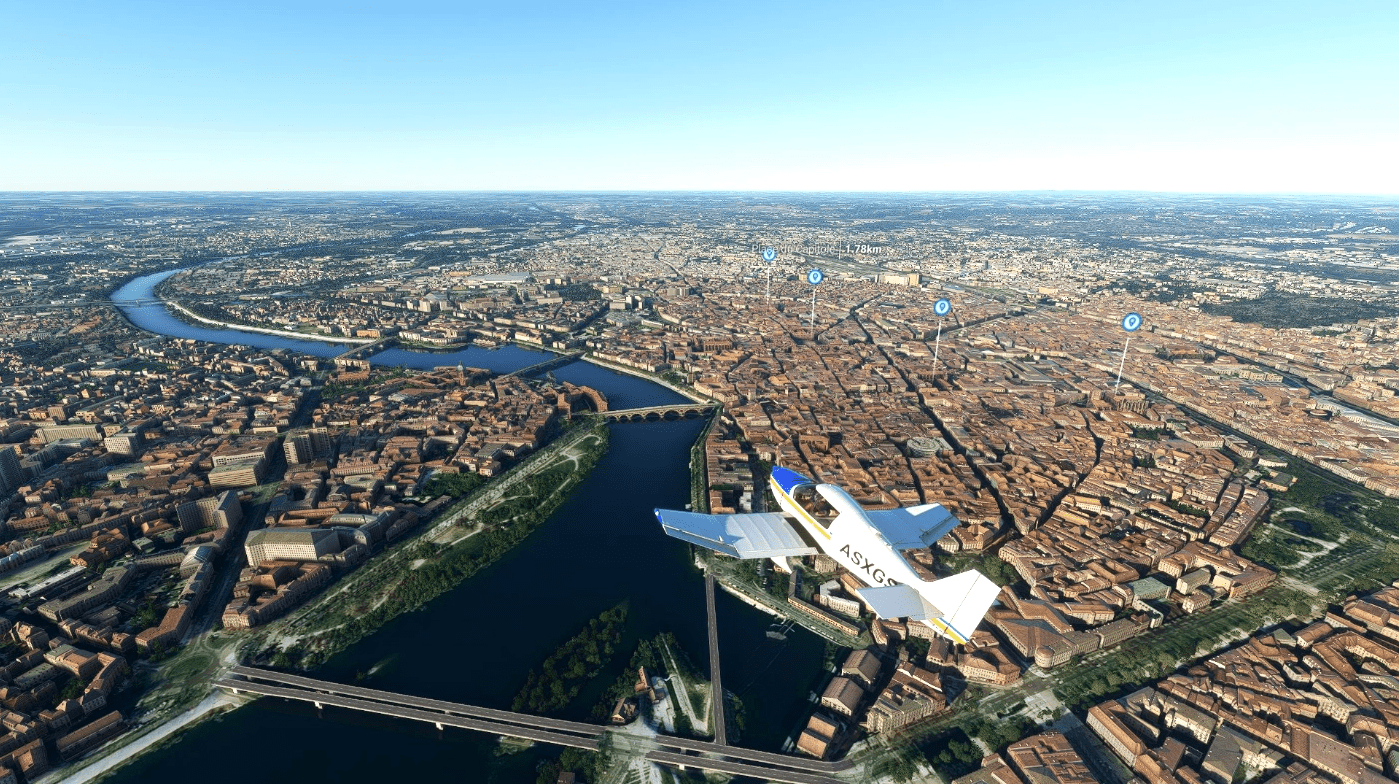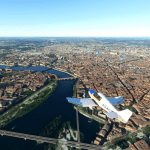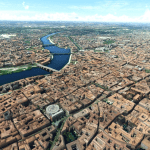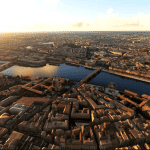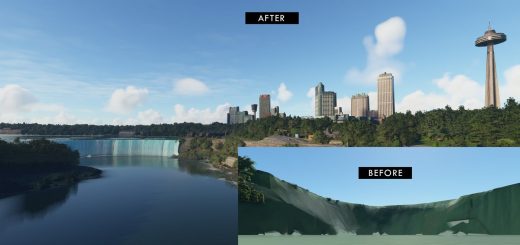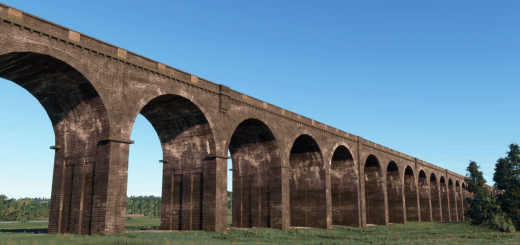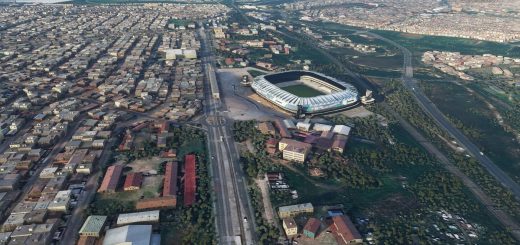Toulouse: Place du Capitole, Basilique Saint-Sernin and other landmarks v0.1
Toulouse is the prefecture of the French department of Haute-Garonne and of the larger region of Occitanie. It is the fourth-largest commune in France, with 479,553 inhabitants within its municipal boundaries, after Paris, Marseille and Lyon, ahead of Nice; it has a population of 1,360,829 within its wider metropolitan area as of January 2017.
Founded by the Romans, the city was the capital of the Visigothic Kingdom in the 5th century and the capital of the province of Languedoc in the Late Middle Ages and early modern period.
Toulouse counts three UNESCO World Heritage Sites: the Canal du Midi (designated in 1996 and shared with other cities), the Basilica of St. Sernin, the largest remaining Romanesque building in Europe, designated in 1998 along with the former hospital Hôtel-Dieu Saint-Jacques because of their significance to the Santiago de Compostela pilgrimage route. The city’s unique architecture made of pinkish terracotta bricks has earned Toulouse the nickname La Ville Rose (“The Pink City”)
This pack does not contain a full photogrammetry extract of the city but rather focuses on a few emblematic or massive buildings to keep acceptable size and performances for lower configurations.
It contains the following mods:
-Place du Capitole: this is a square of the historic center of Toulouse in France. The gradual release of the place starts at the beginning of the 18th century. It also allows the consuls of the city, the capitouls , to magnify their power by the enhancement of their “Common House”, the Capitole. The Capitole houses the city hall and its construction began during the 17th century and lastd almost 200 years. Its facade was built in 1750 and was originally covered with a white wash.
-Basilique Saint-Sernin: this is the former abbey church of the Abbey of Saint-Sernin or St Saturnin. Apart from the church, none of the abbey buildings remain. The current church is located on the site of a previous basilica of the 4th century which contained the body of Saint Saturnin or Sernin, the first bishop of Toulouse in c. 250. Constructed in the Romanesque style between about 1080 and 1120, with construction continuing thereafter, Saint-Sernin is the largest remaining Romanesque building in Europe. The church is particularly noted for the quality and quantity of its Romanesque sculpture.
-Cathédrale Saint Etienne: its construction, which was mainly done at the beginning and then at the end of the 13th century, reflects the history of this decisive century which saw the city lose its independence to become a French city. The single nave is the first example of Southern French Gothic, at 19 metres wide it probably was at its completion the widest in Western Europe (1210-1220). The higher choir that adjoins it was built in the Gothic style of northern France shortly after the city became part of the Crown of France in 1271.
-Couvent des Jacobins: the Dominican convent of Toulouse is considered to be, together with the Albi Cathedral, the pinnacle of Southern French Gothic architecture. Like all Southern French Gothic churches it has a deliberately austere exterior, but on the inside its alignment of cylindrical columns form one of the tallest colonnades ever erected in Gothic architecture (28 metres high).
-Hôtel-Dieu Saint-Jacques: the Hotel Dieu is a former hospital on the left bank of the Garonne . Already functional durong the 12th century, it became the largest Toulouse hospital after numerous extensions to the 17th and xviii th centuries. The building was registered and then classified as a historic monument in 1986 and 1988. It has also been listed as a UNESCO world heritage site under the paths of Saint-Jacques-de-Compostelle in France since 1998. The last patients left the buildings in 1987. The Hôtel-Dieu now houses the administrative center of the Toulouse University Hospital and a dental care service.
-Hopital de la Grave: this is a hospital situated in the Saint-Cyprien area. Taking up six hectares (three times the size of the Hôtel-Dieu), La Grave was the second largest hospital establishment and primary maternal care center of Toulouse during much of the 20th century until the CHU of Rangueil was built. It is named for the sandy bank (in French, grève) of the Garonne where it was built.
-Musée des Augustins: this is a fine arts museum which houses a collection of sculpture and paintings from the Middle Ages to the early 20th century. The building in which the museum is sited was built in 1309 in the Gothic style and prior to the French Revolution housed Toulouse’s Augustinian convent. The convent was secularized in 1793 and first opened to the public as a museum in 1795, very shortly after the opening of the Louvre, making it one of the oldest museums in France after the Louvre and the Musée des Beaux Arts in Besançon.
-Cité de l’Espace: The Cité de l’espace is a scientific discovery centre focused on spaceflight. It was opened in June 1997 and is located on the eastern outskirts of the city. As of 2012, there had been more than 4 million visitors. It features full-scale models of the Ariane 5 rocket (55 metres or 180 feet), Mir, and Soyuz modules as well as other exhibits.
-Les Abattoirs is the museum of modern and contemporary art of the city, opened in a former municipal slaughterhouse.
-Place des Carmes: This square is located in the heart othe Carmelite district. Between December 1963 and February 1964, the old covered Carmelite market was destroyed to leave place to a vast building, formed by the juxtaposition of geometric figures, characteristic with its helical access ramp , which includes a market, a parking lot and an office building. The new parking market was inaugurated inDecember 1966 and renovated in 2000. This mod also covers the church Notre-Dame de la Dalbade located two blocks away.
-Gare de Toulouse Matabiau: Toulouse waited until the middle of the 19th century for the railway to arrive in the city. The current passenger building was built between 1903 and 1905, replacing an older and smaller building. The station took the name of the borough, an area called Matabiau, named after the martyrdom of Saint Saturnin, mata-bios meaning kill the bull. It was designed by Marius Toudoire (who also designed Bordeaux Station) and was built with stone from the Roman city of Saintes. Like the Midi station in Bordeaux, Matabiau station bears 26 coats of arms on the front of the building of the 26 destinations that Midi served. This mod is completed by the Hotel Pullman mod which covers the tall buildings nearby located in the Allées Jean Jaurès.
-Halle aux Grains: a previous cereals coverd market, the Halle aux Grains is nowadays a symphonic concert hall which hosts the Orchestre National du Caputole de Toulouse.
-Théâtre de la Cité: Inaugurated in 1998 and located in the heart of the historic center between Place Wilson and the contemporary district of Place Occitane , the Théatre de la Cité houses an 888-seat amphitheater , a small with 250 seats and a 72-seat studio
-Eglise Saint-Aubin: The Saint-Aubin church is located in the popular district of Saint-Aubin-Dupuy , to the east of the historic city center. Massive, and without a bell tower, this church was built from 1847 by the architect Jean-Marie-Thérèse-Auguste Delort on an old cemetery in a style that combines Gothic , Roman and Byzantine arts. It was opened in 1853.
-Pont Neuf: inaugurated in 1659, this bridge is not symmetrical; the longest arch is the third from the right-hand bank. It is 220m long and has 7 arches.
-Pont Saint-Pierre: originally a wooden toll bridge, it was rebuilt in 1927 as a suspension bridge, with a metal frame, considered more aesthetic.
-Pont des Catalans: Inaugurated in 1908 and initially called the Amidonniers bridge, from the name of the district it connects, this bridge made of stones and reinforced concrete finally took the name of Pont des Catalans, to honor the friendship that united the cities of Toulouse and Barcelona since the visit of its mayor, Domènec Sanllehy i Alrich in 1907.
Alternative mod:
Full photogrammetry extract by Thalixte: https://www.allflightmods.com/microsoft-flight-simulator-2020/msfs2020-scenery/toulouse-france-v1-0/
GPS Coordinates: 43.604503289246196, 1.4449759916412939

